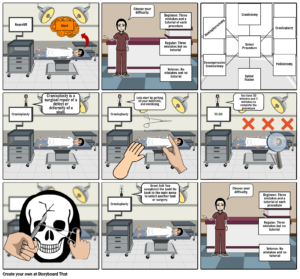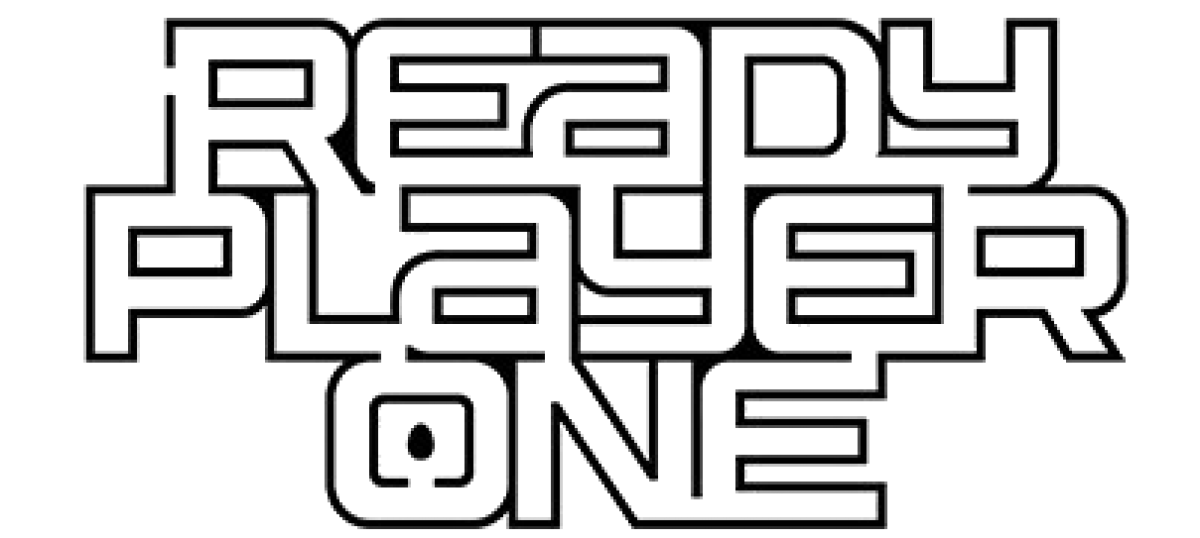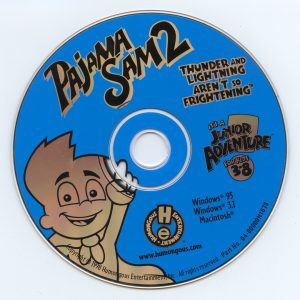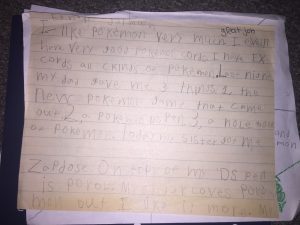Ethan Jarmush
Presentation:
https://docs.google.com/presentation/d/1Q2Xsz4Zjc28t094FJVD6M1K01tzJHam6dzee0RUr-Ks/edit#slide=id.g464d85a162_0_23

Intro
The product we are proposing is a simulation based VR app made for the HTC Vive that will assist in educating up and coming neurosurgeons specific procedures. It would be as if they were really performing these surgeries but it’s in the virtual world without risk or other constraints. The main people we would sell this to would be both hospitals and universities such as Johns Hopkins. This product allows students entering the field to get a very realistic hands on experience to neurosurgery and teach them much more than they could just by studying what’s written in a book. Not only can new students use this but veteran surgeons could use it to hone their skills or prepare for an upcoming surgery while patients could observe the problem they they have and see how exactly they’re going to fix it, which could put them as ease.
There has been research done on the topic of the uses of VR in neurosurgery. The academic journal by Panayiotis Pelargos titled “Utilizing virtual and augmented reality for educational and clinical enhancements in neurosurgery” talks about how VR could improve the neurosurgery field greatly. It is stated that implemented VR into this area will “lead to greater efficiency, improved patient care, and minimization of technical errors that are inherent to the surgical learning curve” (Pelargos et al.). Another source that talks about this is the stanford.edu website where they state “The surgeons practice the procedure using images of the actual patient, rather than generic anatomy, allowing them to map out the exact path they will take during the surgery, ahead of time.” (“Stanford Neurosurgical Simulation and Virtual Reality Center”)
Learning Outcomes
Evaluate and Practice Procedures*
Incorporate Effective Decision Making in a Semi-Immersive Environment*
Analyze Real-Time Feedback on Procedures*
Develop Reduced Apprehension of Performing Procedures*
Develop Muscle Memory*
Apply Accuracy and Effectiveness on Real Procedures*
Using virtual reality to evolve science, health, and education has and will continue to have an everlasting effect on the quality of life. Ensuring that one has the most maximized quality of life is important and essential for the human race to thrive.In addition, the people associated in conducting the procedure become more of an asset to society. There are several educational learning outcomes from using virtual reality that can improve the effectiveness and accuracy of procedures performed. As one outcome neuro-scientists and neurosurgeons, are able to practice on something that is real, but simulated. “Despite its infancy, attempts to apply AR in surgery have been successful and promising”.( Shuhaiber 1) They can evaluate the choices they made using the app and make changes to how they handle certain situations. Another outcome would be incorporating effective decision making in the semi-immersive app environment. “Marking structures of interest on radiographic images that can be superimposed on live video camera images allows a surgeon to simultaneously visualize the surgical site and the overlaid graphic images, creating a so-called semi-immersive environment.”(Shuhaiber 1) This would enable you to test yourself without the fear of harming a patient. Accurate decision making in a time of crisis in the operating room can be the difference between someone living and dying. Analyzing real-time feedback on procedures is crucial in learning from your mistakes and adapting. “Haptic devices, including styli and gloves, continue to evolve in the consumer arena in an effort to improve tactile feedback; although these may not be practical in a sterile intraoperative setting, they show significant promise for preoperative planning and for surgical education.”(Domingo 4). Understanding what or why you didn’t do something can help increase your accuracy on specific procedures and it gives you understanding and guidance. Developing Reduced Apprehension when performing procedures is another key educational outcome gained from using the application. Becoming more and more confident in doing something with repetition can insure you don’t make mistakes and you complete a successful procedure. Developing muscle memory in any application can produce better results. Finally, the interaction between surgeons, augmented displays, and robotically actuated instruments shows tremendous promise for faster and safer surgery in multiple disciplines.(Domingo 4) When something comes natural and fluid it puts the patient at ease and makes the operation go smoothly. Using the app will increase the accuracy and effectiveness in which you perform specific procedures. With greater accuracy you will come out feeling more confident and have a better understanding on what needs to be done and when. This app will also create a significant difference in the effectiveness in which you perform procedures, you will be able to take cut the operation time in half but still maintain quality of service.
User Experience/Interface
There are other applications that do surgery in virtual reality but don’t focus on neurosurgery specifically. Osso VR for example portrays a realistic simulation of a knee surgery where you physically perform the surgery but in the virtual world just like we plan to do. Hospitals are now using virtual reality in the neurosurgery field but only visually to plan surgeries ahead of time and to show patients what inside their brains and tell them how they are going to fix it. So we are combining both the physical aspect of the Osso VR and the realistic observable aspect with what hospitals are doing now to create an application that helps everyone involved. It would be using to the HTC Vive and the hand controllers to make sure it’s as immersive as possible since that’s the best on the market right now.
Implementation Strategy
Everyone has ideas. Ideas of things to believe, things to become, or in many other cases, things to invent. When you add the planning in, now you have to look at the financial nitty-gritty, in terms of advertising, making the most of business funds, etc. etc. In the group put together, we sought out an idea to revolutionize Neurosurgery for the next 10 years. We like to call it NeuroVR.
NeuroVR is a simulation based app for the HTC Vive that enhances your ability to perform surgeries. A marketing target for this app would be mostly college medical students, or maybe new employees out of college. To get that real feeling of performing Neurosurgery. This plans to be implemented by having student go step by step into the entire process of surgery, everything from prepping all your materials, to wrapping the surgery up. Some limitations we thought we might come across would be the level of interaction that the students get with the app. We want them to watch and see how it’s done, but we also want them to try it out on their own.
In terms of getting the actual VR application out there, we plan to contact several major newspapers around the U.S. This includes The New York Times, The Washington Post, The Wall Street Journal, and a few others. We are also working on setting up a beta-testing booth at several conventions or conferences throughout the world within the next year, one of them being the IEEE VR 2019 Conference in Osaka, Japan. Another big yearly conference that could give us good feedback is The Consumer Electronics Show (CES) in January 2019, located in Las Vegas. These are just a few to name, but these are large scale media platforms that just put us on the map.
Long Term Vision
Initially, we are keeping this product focused by only focusing on a few neurosurgical procedures such as a Cranioplasty which is a surgical repair of a defect or deformity of a skull and Craniotomy which is the surgical removal of part of the bone from the skull to expose the brain (“Medical Services”). We will also be continuously improving the technology in order to make it as immersive as possible in order to allow the learning outcomes to be as great as possible. We’re focusing small in the beginning so we don’t get too overwhelmed with trying to research and perfect every type of neurosurgical procedure in the book. The next phase of development would be to add new procedures, fix bugs, and improve the technology. Since neurosurgery doesn’t focus solely on the brain and involves any part of the nervous system, we could add other procedures such as a spinal fusion which is a surgical procedure used to correct problems with the small bones in the spine (“Medical Services”) and a peripheral nerve surgery which specializes in the diagnosis and treatment of a variety of peripheral nerve disorders (“Peripheral Nerve Surgery”). So once people have mastered the first few procedures, then they can start learning the new operations and continue to learn and gain muscle memory. The 5 year plan would be to get the product out to as many hospitals and universities as possible which will allow us to get more feedback and keep the game up and running for a longer time. The more we add and the more successful the app becomes, the current owners of this product could end up buying more in order to educate more surgeons at once.
Bibliography
Domingo, Guha, Daipayan, et al. “Augmented Reality in Neurosurgery: A Review of Current Concepts and Emerging Applications.” Canadian Journal of Neurological Sciences / Journal Canadien Des Sciences Neurologiques, vol. 44, no. 03, 2017, pp. 235–245., doi:10.1017/cjn.2016.443. https://www.cambridge.org/core/journals/canadian-journal-of-neurological-sciences/article/augmented-reality-in-neurosurgery-a-review-of-current-concepts-and-emerging-applications/F3965DEB46B21277CE7AFF0C7AAE2858/core-reader#
“Medical Services.” Barnes-Jewish Hospital, www.barnesjewish.org/Medical-Services/Neurology-Neurosurgery/Neurosurgery-Procedures.
Monberg, Jason, and Dale Knauss. “Virtual Reality and Your Product Development Process.” Mind the Product, 9 Nov. 2016, www.mindtheproduct.com/2016/11/virtual-reality-and-your-product-development-process/ .
Neurosurgery. “Virtual Reality Lab.” EHR National Symposium, Stanford Medicine, med.stanford.edu/neurosurgery/divisions/vr-lab.html.
Panayiotis E. Pelargos et al. Utilizing virtual and augmented reality for educational and clinical enhancements in neurosurgery, Journal of Clinical Neuroscience, Volume 35, 2017, Pages 1-4, https://www.sciencedirect.com/science/article/pii/S0967586816303162
“Peripheral Nerve Surgery.” Beta-Blockers for Mitral Valve Prolapse | Michigan Medicine, www.uofmhealth.org/conditions-treatments/surgery/peripheral-nerve-surgery.
Shuhaiber, Jeffrey H. “Augmented Reality in Surgery.” Archives of Surgery, vol. 139, no. 2, Jan. 2004, p. 170., doi:10.1001/archsurg.139.2.170. https://jamanetwork.com/journals/jamasurgery/fullarticle/396410



